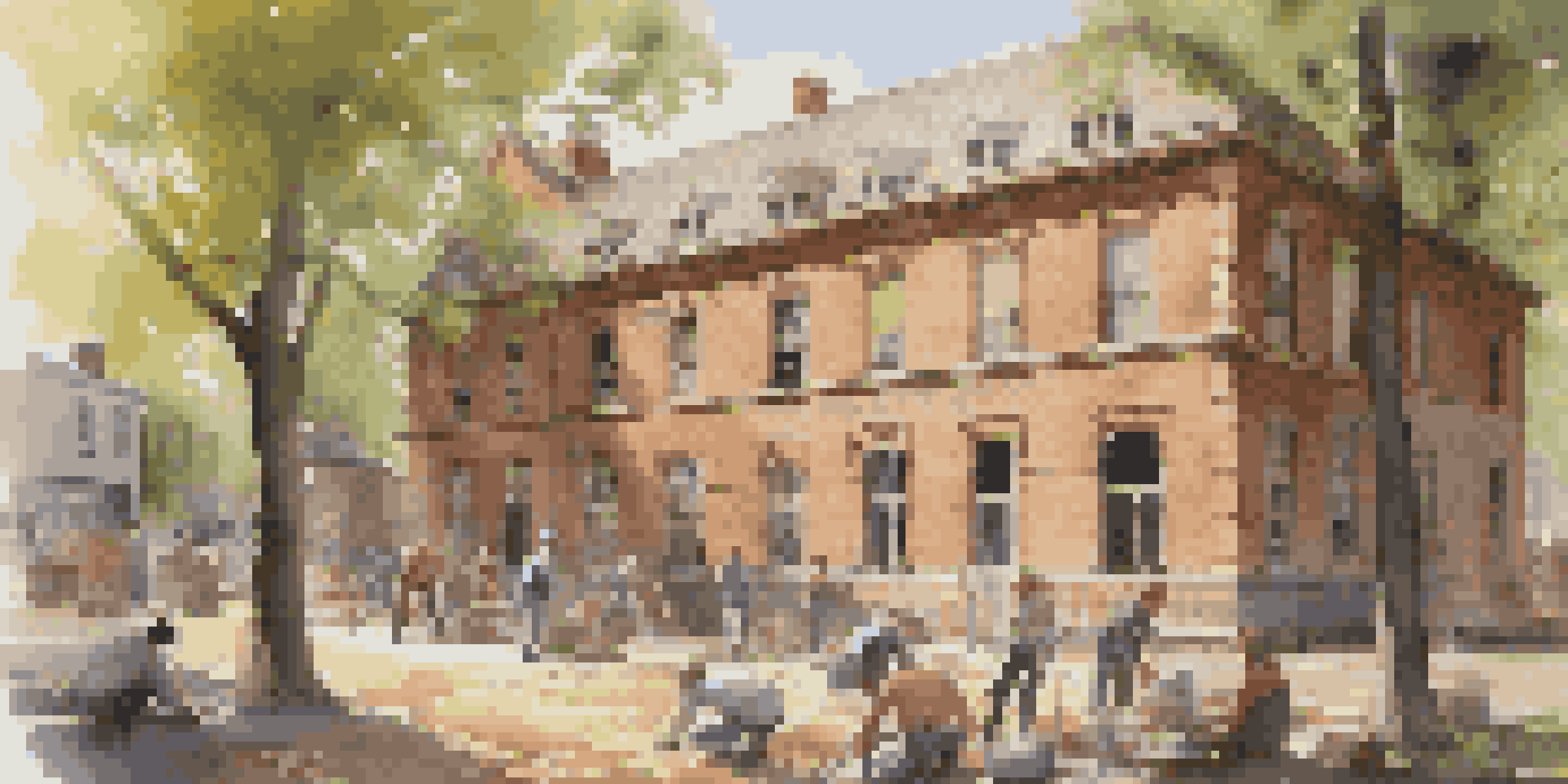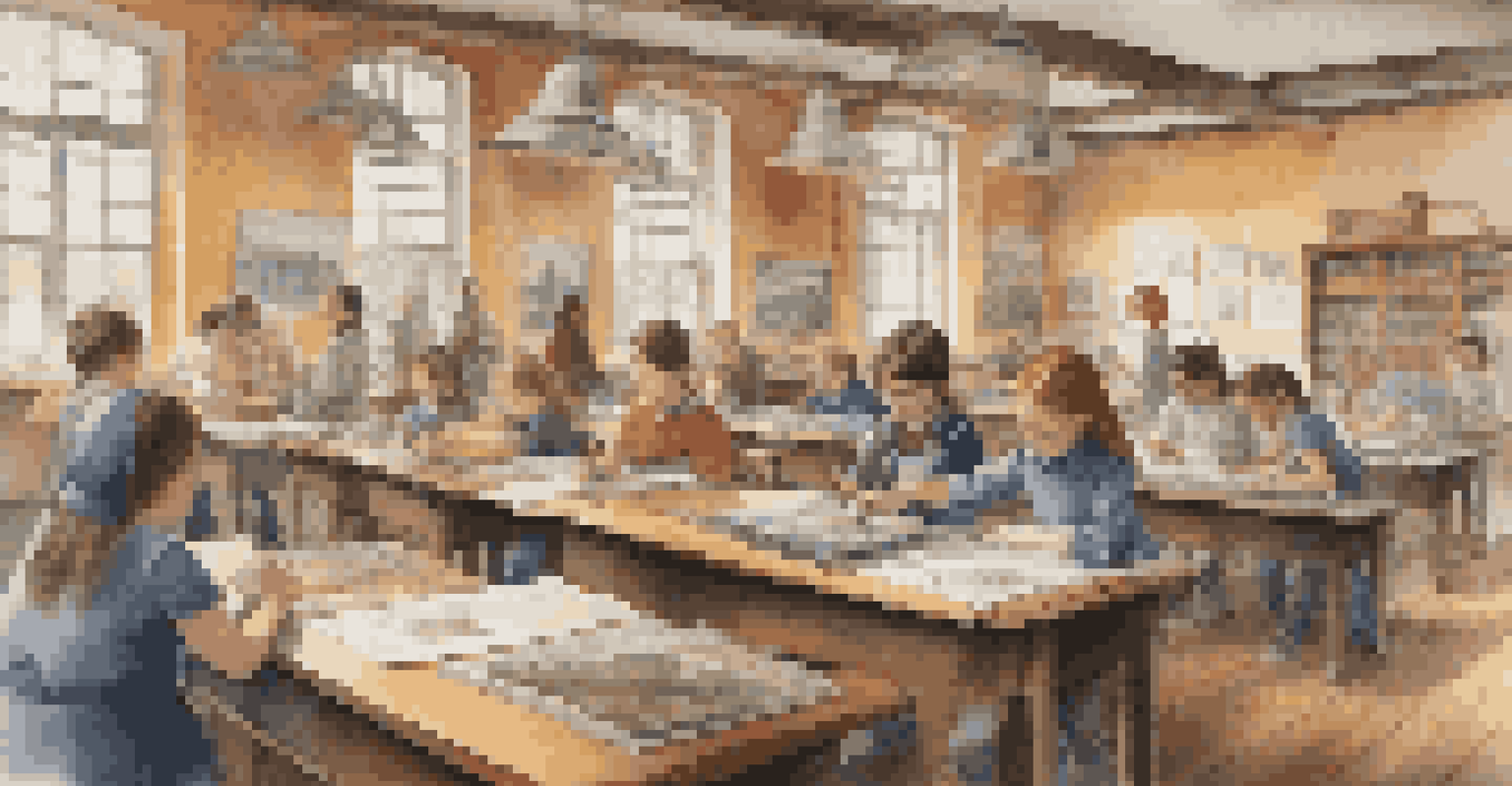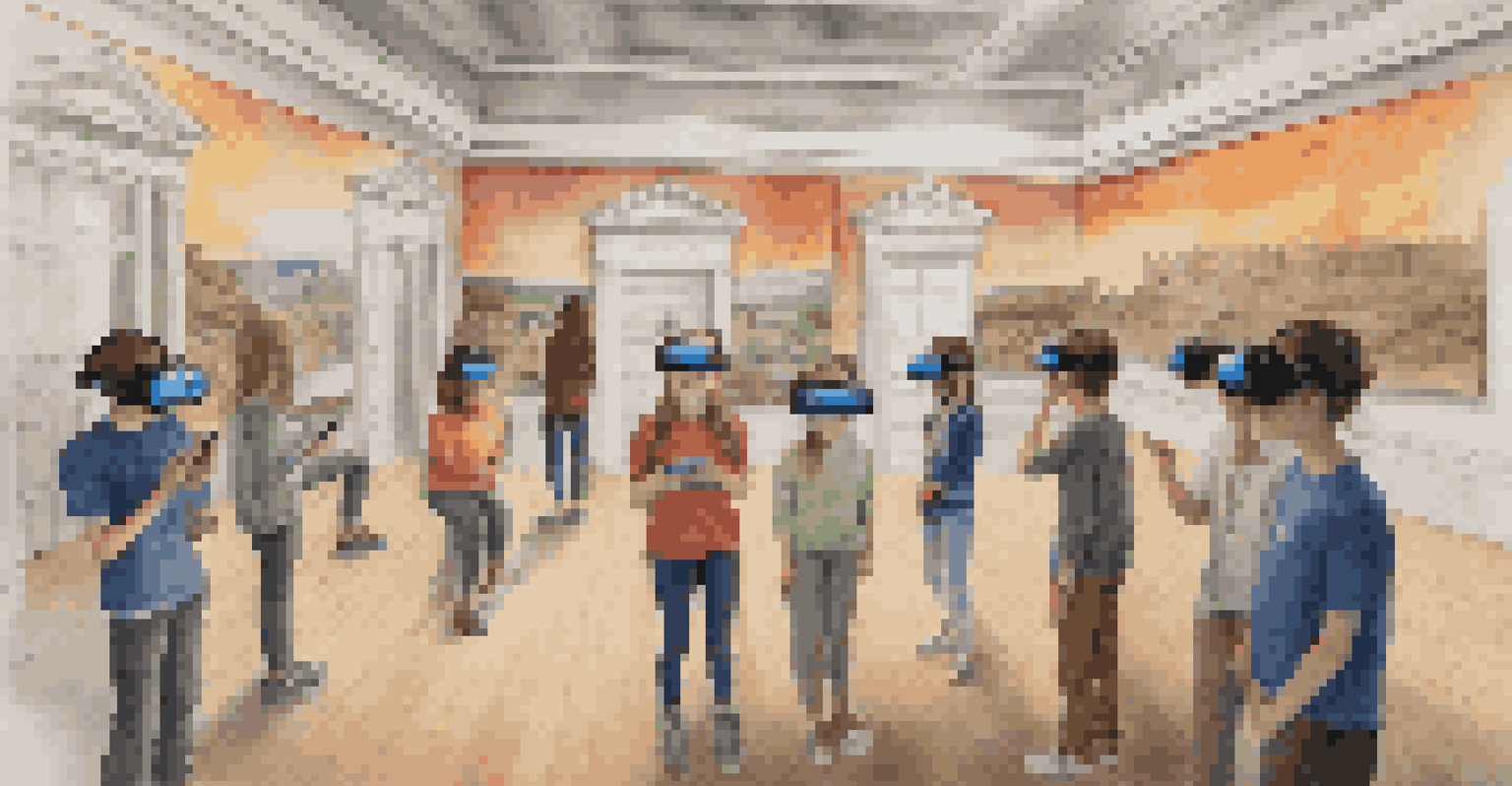Training Future Generations in Historic Property Preservation

The Importance of Historic Property Preservation
Historic property preservation is crucial for maintaining the cultural identity of communities. These sites tell stories of our past, reflecting the architectural styles and values of their times. By preserving these properties, we ensure that future generations can learn from and appreciate their heritage.
We do not inherit the earth from our ancestors; we borrow it from our children.
Beyond nostalgia, preserving historic properties contributes to local economies through tourism and community pride. Visitors are often drawn to cities with rich histories, boosting local businesses and creating job opportunities. This economic aspect underscores the importance of preservation as not just a cultural endeavor but a practical one.
Furthermore, preserving historic sites fosters a sense of belonging and continuity in communities. When people see their history represented in tangible ways, it creates a connection to their roots, helping to build a cohesive community identity. This emotional attachment to places can inspire individuals to become stewards of their heritage.
Engaging Youth in Preservation Efforts
To secure the future of historic preservation, we must engage younger generations. This can be done through educational programs that emphasize the significance of history and architecture. By making preservation relatable and exciting, we can inspire students to take an active interest in their local heritage.

Field trips to historic sites and hands-on workshops can spark curiosity and passion among youth. Imagine a group of students restoring a local landmark, learning about its history while developing practical skills. These experiences not only educate them about preservation but also instill a sense of responsibility toward their community's heritage.
Preservation Boosts Community Identity
Historic property preservation fosters a sense of belonging and continuity, connecting individuals to their roots and enhancing community pride.
Moreover, integrating technology into preservation education can captivate the younger demographic. Virtual reality tours of historic sites or using apps that showcase preservation efforts can make learning interactive and fun. By combining traditional methods with modern technology, we can create a more engaging and effective educational experience.
The Role of Schools in Preservation Training
Schools play a pivotal role in training the future stewards of historic properties. By incorporating preservation into the curriculum, educators can cultivate an appreciation for history and architecture among students. Subjects like art, history, and even science can be woven together through projects focused on local historic sites.
Preservation is a form of stewardship, and stewardship is an essential part of what it means to be a member of a community.
Project-based learning can be particularly effective, allowing students to engage with real-world challenges. For instance, a class could plan a preservation project for a neglected local landmark, conducting research, and presenting their findings. This hands-on approach not only enhances learning but also empowers students to contribute meaningfully to their community.
Additionally, partnerships between schools and local preservation organizations can provide valuable resources and expertise. Guest speakers, workshops, and internships can expose students to career paths in preservation, making it a viable option for their future. Schools can thus act as catalysts for a new generation of preservationists.
Community Involvement in Preservation Training
Community involvement is essential for effective preservation training. Local organizations can organize workshops and seminars to educate residents about the significance of preserving historic properties. Engaging community members fosters a collective spirit, encouraging them to take pride in their shared heritage.
Consider a neighborhood revitalization project where residents collaborate to restore a historic building. Such initiatives not only enhance the physical environment but also strengthen community bonds. When people work together toward a common goal, they develop a deeper appreciation for their history and each other.
Engaging Youth Ensures Future Care
Involving younger generations through educational programs and hands-on experiences is vital for securing the future of historic preservation.
Furthermore, including diverse voices in preservation efforts ensures that all perspectives are represented. This inclusivity enriches the narrative and encourages a broader understanding of what heritage means. By valuing different cultural backgrounds, we can create a more comprehensive approach to preservation that resonates with everyone.
Utilizing Technology for Preservation Education
In today's digital age, technology can significantly enhance preservation education. Online platforms can offer resources, courses, and virtual tours that make learning accessible to all. This democratization of knowledge empowers individuals to explore preservation from their homes, broadening the audience.
Social media can also serve as a powerful tool for raising awareness about historic property preservation. By sharing success stories, challenges, and educational content, organizations can engage a wider audience. Platforms like Instagram and TikTok can showcase the beauty and significance of historic sites, capturing the interest of younger generations.
Moreover, gamification of preservation education can make learning enjoyable and interactive. Educational games and apps that challenge players to solve preservation-related puzzles can ignite interest. This playful approach can turn preservation into an exciting adventure, appealing to the natural curiosity of youth.
Internships and Apprenticeships in Preservation
Internships and apprenticeships provide invaluable hands-on experience in preservation. They offer youth the opportunity to work alongside experienced professionals in the field, learning practical skills and gaining insights into the preservation process. This real-world exposure can be transformative, shaping their career aspirations.
For example, a student working on an internship with a historic restoration team may learn about traditional construction techniques and materials. This knowledge not only enhances their skill set but also deepens their appreciation for the craftsmanship involved in preservation. Such experiences can ignite a passion for heritage conservation that lasts a lifetime.
Technology Enhances Preservation Education
Utilizing digital tools and social media can make preservation education more accessible and engaging, attracting a wider audience.
Additionally, these programs often foster mentorship relationships that can guide young people in their career paths. A mentor can provide advice, share experiences, and help students navigate the complexities of the preservation field. This support system can be crucial in encouraging youth to pursue a future in historic property preservation.
The Future of Historic Property Preservation
The future of historic property preservation relies heavily on the passion and commitment of younger generations. By equipping them with the knowledge and skills necessary for this field, we can ensure that our cultural heritage is safeguarded for years to come. It's not just about preserving the past; it's about shaping a more informed and conscientious future.
As we embrace new technologies and innovative educational methods, the landscape of preservation will continue to evolve. This adaptability is crucial in addressing the challenges that historic properties face in an ever-changing world. By staying engaged and informed, future preservationists can find creative solutions to protect our heritage.

Ultimately, fostering a love for history and architecture in young people is key. When they see the value in preserving their community's stories and landmarks, they are more likely to become advocates for conservation. Together, we can inspire a new generation dedicated to the stewardship of our historic properties.